Calculating the Age of a Glacier
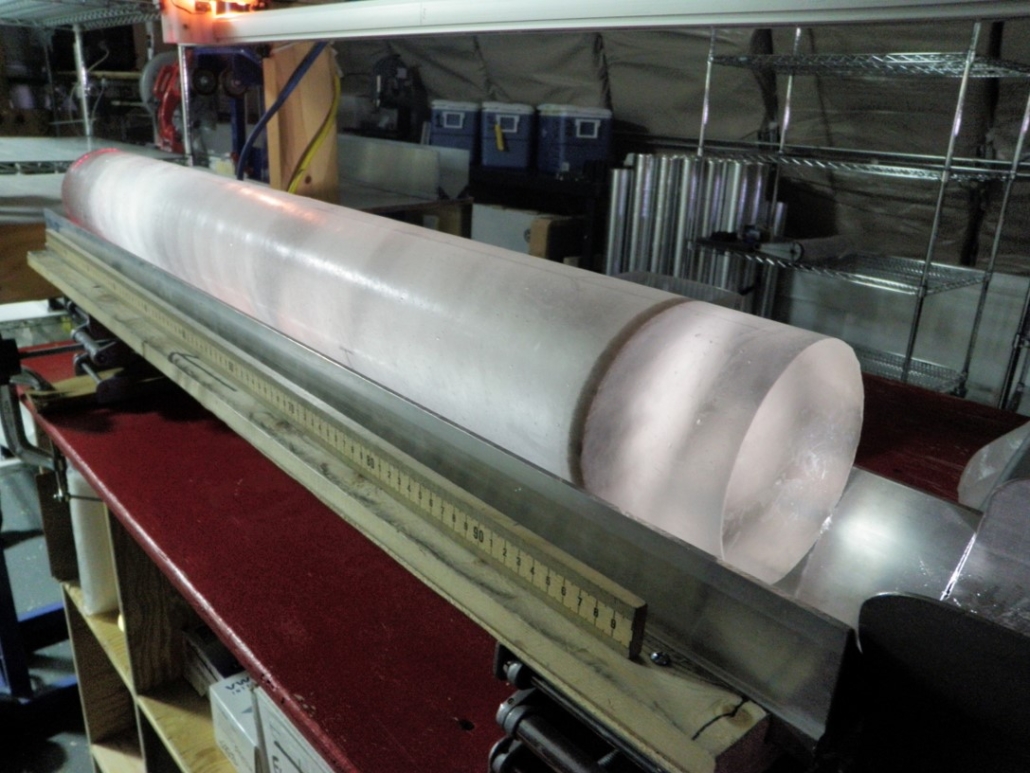
Ice cores retrieved from glacial ice in the Polar Regions and high-altitude mountain ranges provide a wealth of climate information well before humans invented instruments to measure these variables.
Snow falls on a glacier each year creating a new layer of snow.
The dark band in this ice core from the West Antarctic Ice Sheet Divide (WAIS Divide) is a layer of volcanic ash that settled on the ice sheet approximately 21,000 years ago.
As time passes more and more layers are created, and the properties of the ice in those layers tell scientists about the environmental conditions when that snow fell. The oldest ice core is from Antarctica and has layers dating back to almost one million years ago.
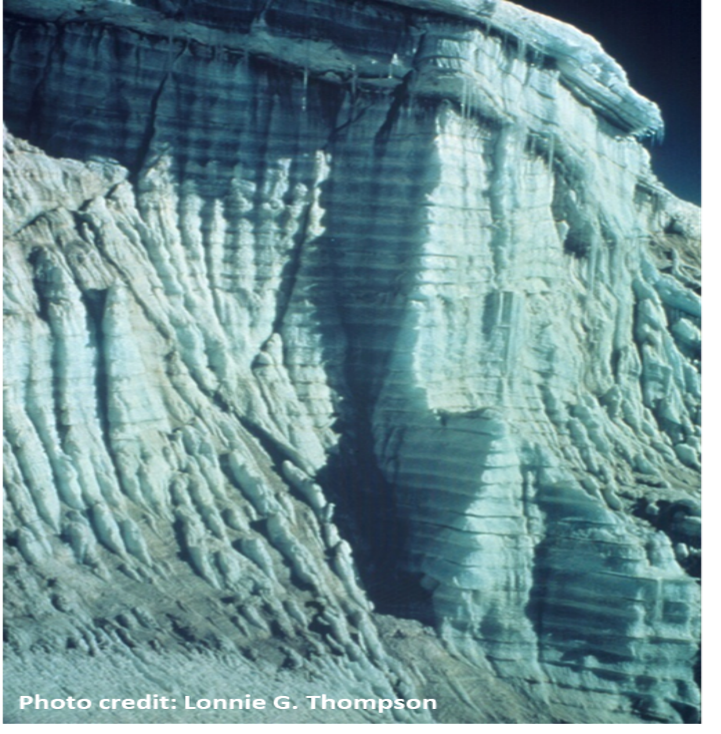
Understanding Elements
Scientists look at the elements inside ice cores for information. To learn more about this, we need to understand elements. They are organized in a chart called the periodic table. On this chart, elements have an atomic number, symbol, name, and atomic weight. Learn more below!
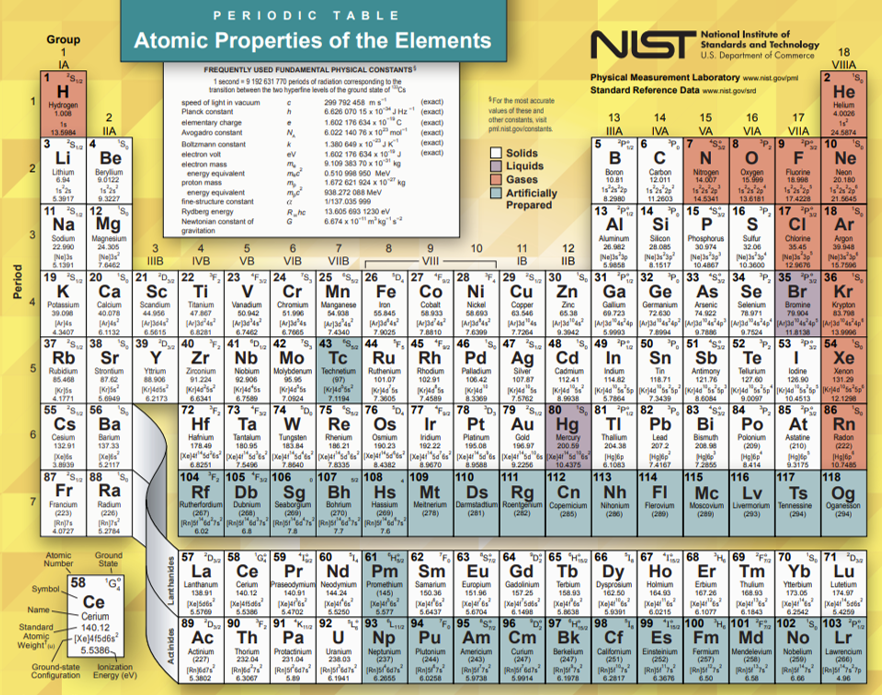
Over 99.75% of oxygen molecules (O2 have 8 protons and 8 neutrons in their nuclei, and thus they have an atomic mass of 16. This is represented as 16O.

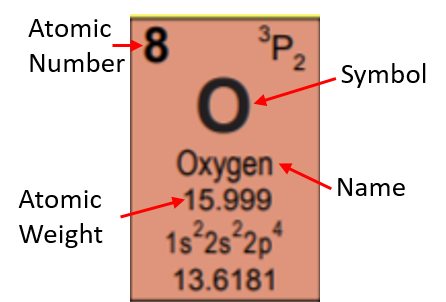
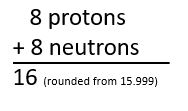
Based on the information you have read so far and the 3 images above, answer the following question:
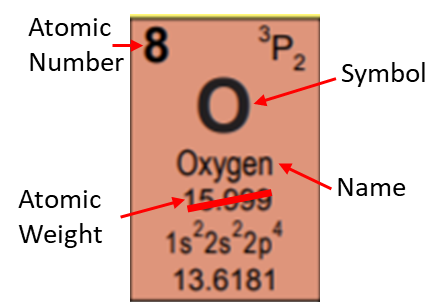
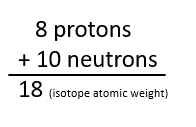
About 0.2% of oxygen molecules have 2 additional neutrons, thereby increasing their mass to 18. This is represented as 18O. 18O is what we call an isotope of 16O. They are both oxygen molecules, but 18O is just a little bit heavier than 16O.
The relative ratio of 18O can tell scientists about temperature. The atmosphere needs more energy to transport the heavier 18O over long distances, just like humans need more energy to carry something heavy.
Elements in Ice Cores
The atmosphere gets its energy from heat. If it is warmer, the atmosphere has more energy to carry the 18O to our ice core drill site, and more 18O is detected in the ice core. If it is color, the atmosphere does not have enough energy and fewer 18O molecules are detected in the core.
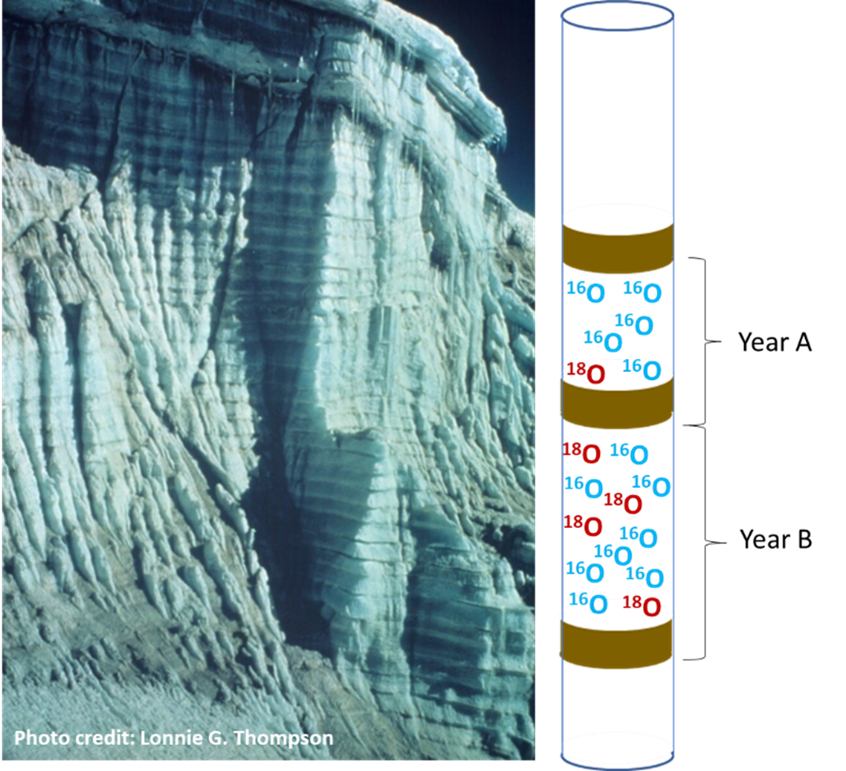
Thin layers of dust in ice cores can be indicative of the dry season, and these thin layers can aid in determining the annual cycle.
The ice between the dust layers indicates how much snow fell in that year. Remember, the oxygen isotopes (18O) can be used to determine temperature.
Use the model ice core on the left to answer the questions below.
It might seem confusing that the warmer year had more snowfall. Warmer temperatures result in more moisture in the air (humidity). This results in more precipitation which is often in the form of snowfall in polar regions.
Collect Your Badge!
If you have completed all the steps in this adventure… Congratulations! You have earned the Ancient Antarctica – Polar Explorer Adventure badge!
To collect you badge, you can click on the button above to download it an add it to your virtual notebook, or print it and add it to your physical notebook. Kudos!

